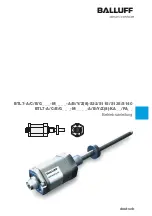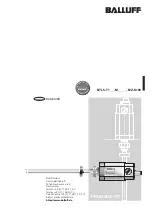
6: A little History:
In the early eighties, Philips Australia started producing a commercial radio for the Australian and international
markets. The radios came in various configurations and frequency bands. They where constructed from a one
piece die-cast enclosure, with ether a local control face plate or remote control head. The circuitry is contained
on 3 main boards (RF, CPU and PA), PCB's are double sided FRG4 fibreglass. All of the components are
through hole except the SMT parts mounted on ceramic hybrid SIP's. The whole construction is extremely
ruggedised and very solid. The FM900 series came in 3 basic models (FM91, FM92 and FM93). It also came in
some special/custom variants and also a waterproof model FM97.
The FM91 is intended as the high end 120 channel model and only came in a remote head version. It has a
numeric keypad, function, scan, site, send keys, digital mute and volume, it also has an eight digit seven
segment red LED display, most options are programmable from the head.
The FM92 was the standard 40 channel radio (up to 99 CH's), it came in 2 variants, local head and remote head.
It has channel up/down, aux and send buttons, analogue mute and volume. The display consists of two seven
segment red LED display. The radio can be programmed with almost the same options as the FM91 but it's not
changeable from the front panel. The remote head also has a built in speaker. This is the most common FM900
series radio.
The FM93 is the low end 10 channel baby. It has channel up, aux and send buttons, analogue mute and volume.
The display is a single seven segment green LED display. It only came in a local head version and differs
considerably from the other FM900 series radios, in that it's a servery striped down version, utilising cheaper
receiver section and different PLL. It also lacks an A-D chip, therefore it can't facilitate some functions, mainly
voting. Sometimes these units actually have FM92 PCB's installed, but they can only display channels 0-9.
The FM97 is basically a waterproof FM92 with an FM91 CPU board. It only came in a remote version, the head
was made from a white die-cast jiffy box, it uses Mil-spec bayonet connectors and high quality push button
switches with waterproof boots. It has volume up/down, channel up/down, mute, a, b, c function buttons. The
display consists of 4, 7 segment red LED displays. According to information from an ex-Philips employee they
were designed for police motor bikes!!
The only real deference between the FM91 / FM97 and FM92 is that the FM92 has a standard volume control
pot, but the FM91 / FM97 has a 4 bit digital audio attenuator hybrid instead.
All models are based on the Motorola MC146805 CMOS micro controller, and normally have an 8k (2764)
EPROM. The EPROM contains the program code and channel data.
Philips FM92E Conversion to 6 Meters: Version 3.9 Page
7
Summary of Contents for FM92E
Page 19: ...Synthesiser Board Philips FM92E Conversion to 6 Meters Version 3 9 Page 19 ...
Page 26: ...Receiver Board Philips FM92E Conversion to 6 Meters Version 3 9 Page 26 ...
Page 50: ...FM91E PA Board above view Philips FM92E Conversion to 6 Meters Version 3 9 Page 50 ...
Page 52: ...Philips FM92E Conversion to 6 Meters Version 3 9 Page 52 ...
Page 54: ...Philips FM92E Conversion to 6 Meters Version 3 9 Page 54 ...
Page 55: ...Philips FM92E Conversion to 6 Meters Version 3 9 Page 55 ...
Page 79: ...40 6 Meter Antenna Philips FM92E Conversion to 6 Meters Version 3 9 Page 79 ...
Page 83: ...42 Philips FM91 Schematic Diagrams Philips FM92E Conversion to 6 Meters Version 3 9 Page 83 ...








































